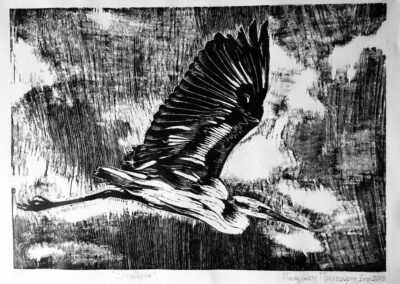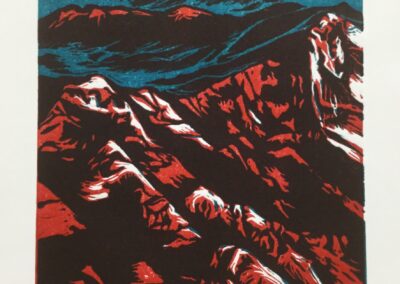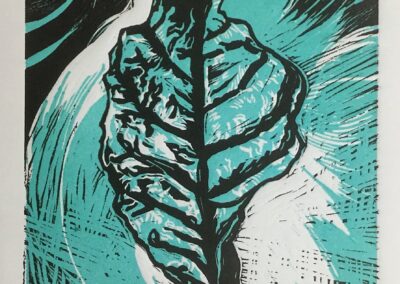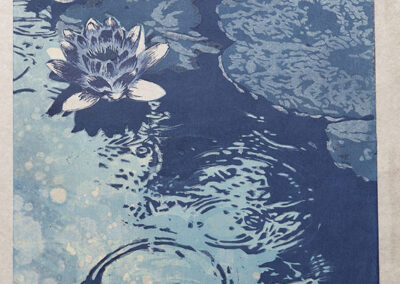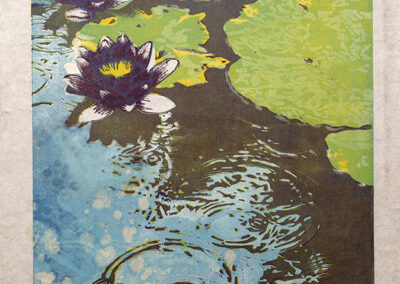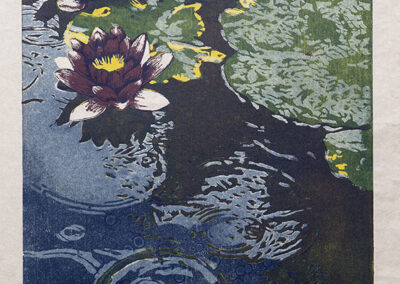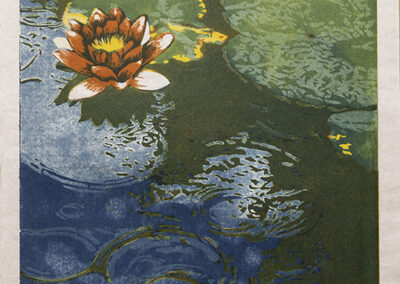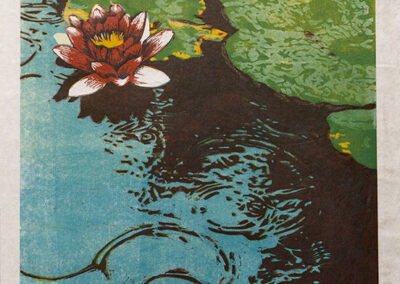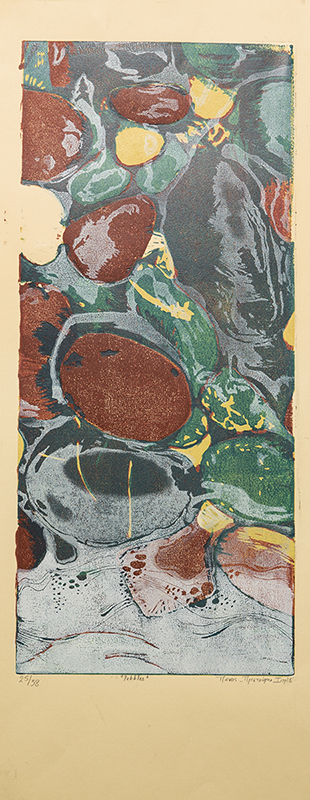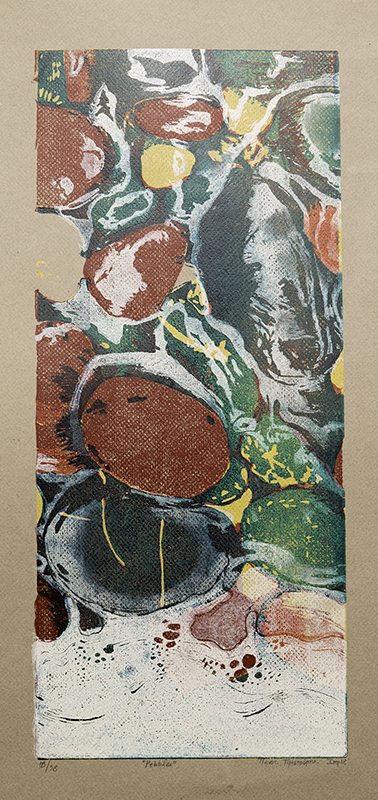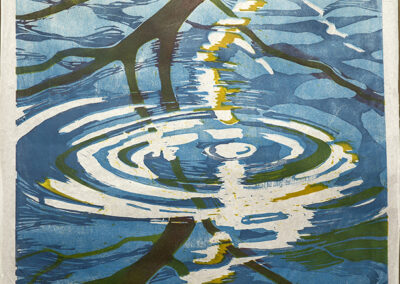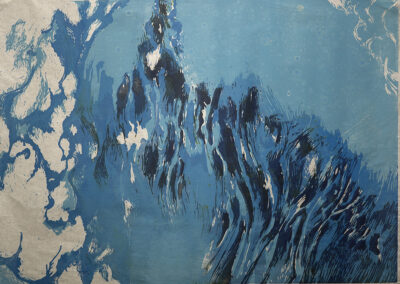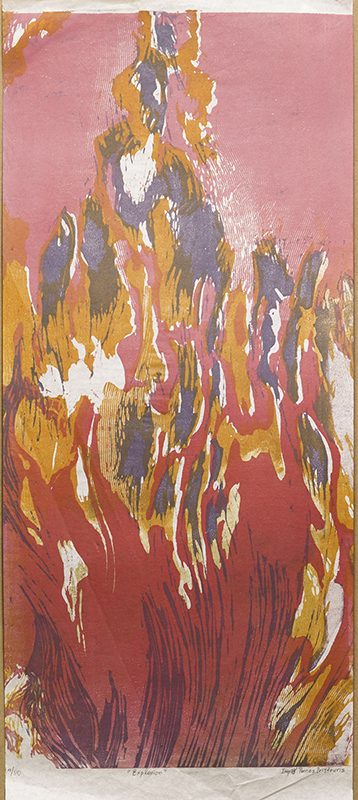Technique:
On the surface of a flat polished, mainly, wooden plate, the engraver-painter draws his composition with ink or charcoal. With his tools (knives, cutters, chisels, etc.) he removes the white (unwritten) parts of the wooden plate which is now the matrix – master that will print the engravings. The design on the wooden matrix, after the engraving process is relief, so that when it is inked with a roller (made out of rubber) the ink will remain only on the non-engraved surfaces. He then places a special paper on the inked matrix which he presses by hand or through a press. The printed paper is now the first engraving, otherwise: the first woodcut. In color woodcut the process includes a polished wooden plate for each color. The combination of the plates gives us the final engraving which is the first color woodcut.
Personal style:
In the following woodcuts, each already produced theme-design, is approached in an artistic way. The combination of colors is such that, in fact, the artist “paints” applying the engraving technique as a method. He stays true to the rules through which an engraving matrix is created, while at the same time, he experiments with printing inks.
As a result, from the layering of the colors on the paper, each time different shades are created. It is worth noting that works produced with this technique are unique. However, the reproduction of the same engraving work becomes possible, after using exactly the same shades-pigments of colors. Therefore, the artworks are not monotypes.
The engravings are printed on different papers, with different qualities, from plain printing paper to a handmade Japanese one.
